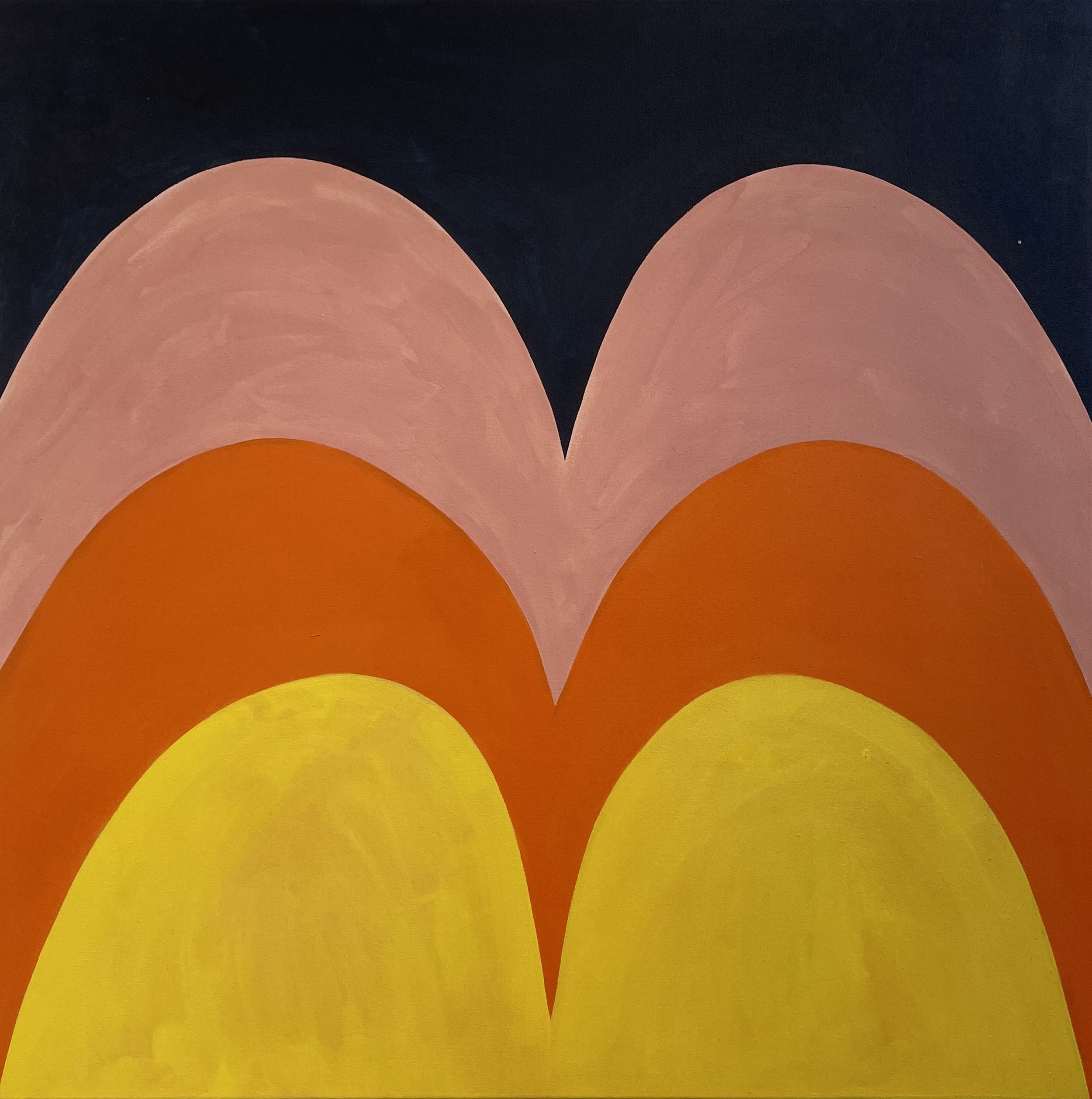Sara Dare Paints, You Project
A few years back, I placed a work by artist Sara Dare in a corporate collection. Not long after, I got a panicked call from the client’s representative. Someone—likely an expert in stirring up shit—had announced that they saw a vagina in the painting. The poor rep didn’t know what to do. Should they take it down? Would HR get involved? Was this an emergency? Meanwhile, I was trying to figure out how to explain that this was a very normal reaction to an abstract painting. People see what they want to see. It’s part of what makes art interesting, and it’s one of the reasons I love Sara’s work.
In Sara’s work, a shape might read as organic one moment and architectural the next. There’s no single answer, no tidy explanation. Instead, she creates tension—between balance and imbalance, between playfulness and unease, between what’s revealed and what’s concealed. The best abstract painters know how to control that tension without killing it, and Sara does this instinctively. Her compositions push against each other, spill past their boundaries, stretch to fill the space, or pull back just enough to keep you wondering. It’s like the forms are still in conversation with each other, still deciding what they want to be.
Her process has the same energy. You can see it in the way the materials interact—ink bleeding into acrylic, oil sitting on the surface, some areas brushed on with control, others left to do their own thing. It’s physical. She’s letting the paint behave how it wants, but she knows when to step in. There’s a looseness that gives her work momentum, but nothing feels accidental. Even when the shapes seem like they’re about to collapse into each other, there’s an underlying sense of control, like she’s guiding the painting to the edge of chaos without letting it fall in.
Scale plays into this too. Some of her works are small, intimate, like a glimpse into her sketchbook. Others are large enough to shift your sense of space. Stand in front of one, and you might feel like you’re looking through an archway or into a tunnel. She knows how to manipulate perception, how to make a flat surface feel like it’s got depth. And then there’s her color—sometimes bold, sometimes subtle, always exact. It’s another way she keeps things in balance (or deliberately off-balance). Some choices feel instinctual, like she grabbed the nearest tube and went for it. Others are so precisely placed that you know she thought about them for a long time. The best part is that you can’t always tell which is which.
Sara’s work doesn’t give you easy answers, which is why it sticks with you. It asks you to sit with ambiguity, to let your mind wander, to be okay with not knowing exactly what you’re looking at. People who need neat explanations will struggle with it, which is probably why my client panicked over the idea that their new painting might be anatomically suggestive. But the truth is, all art invites projection. Sara just does it better than most.




